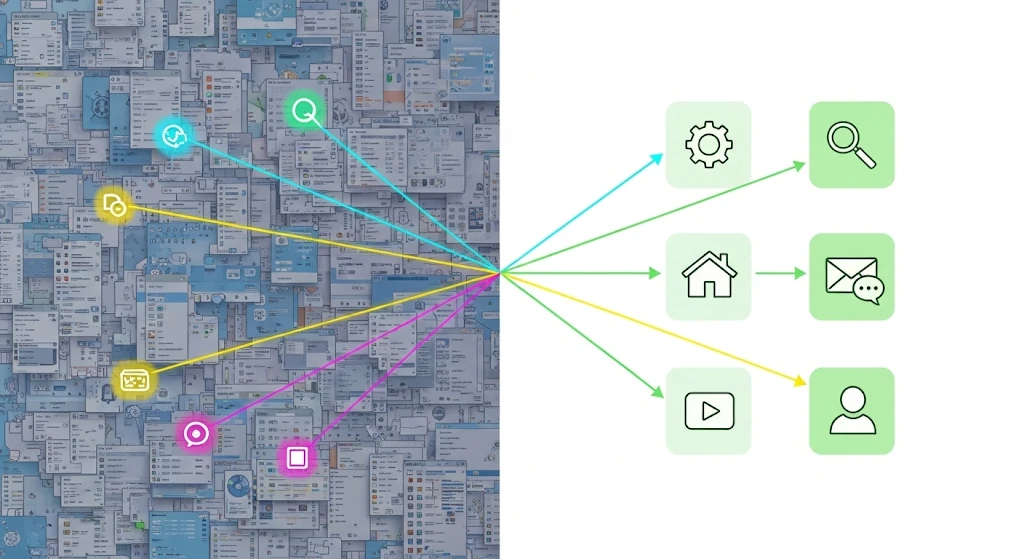Success of any software product depends upon the kind of user-experience it offers. While the technical aspects of every system are different, one criterion that every software is judged upon is whether it is user-friendly or not? That’s why it is important for software developers to keep the end-user in mind during the development process. Despite having unique functionalities and features in your product, if it is difficult to navigate, the chances of it being successful are greatly reduced.

Users look for systems that are easy to understand and operate. Spending inordinate amounts of precious time learning to perform a single task is not an option. Hence, they might uninstall your application straightaway if it’s not friendly to use.
The secret to making your software user-friendly lies in viewing your software with a usability perspective. The top 6 features that users prefer in a software product are as follows:
- Easy to install
- Easy to navigate
- Simple error messages
- Easy to update
- Good Graphical User Interface
- Easy to uninstall
1. Easy to Install
First point of contact for the user with a system is the installation process. Therefore, it is essential to ensure that the process is smooth and quick. The installation should be uncomplicated and well-documented. This is the process that shapes initial perception of a user about your product, and if it turns out to be strenuous, they might abort the installation altogether. You should use a reliable and professional installer to create simple installation packages and create a positive image even before the user begins to use it.
2. Easy to Navigate
User-Friendly software is easy to navigate. Strong navigation enables users to perform tasks with minimum effort and time. It should be consistent, and features that are available to the user must be conveniently accessible. The ones that are not frequently used can be placed later in the menu but still, they should not be too difficult to find.
The number of clicks that your software requires is also something that has an impact on user experience. Make sure your user can navigate the software with two clicks or less. While you optimise your system for fewer clicks, also provide the user with keyboard shortcuts for smooth navigation.
3. Simple Error Messages
Errors are almost inevitable. They can be found in many products. Managing errors through informative error-handling is an important feature. Error messages should be appropriate and give the user an understanding of what is wrong with the system. It is essential to provide users with options for actions to resolve their issues. Error dialog should not use complex jargon because its purpose is to lead the user to a solution. Complex error messages often mislead users into thinking that they may have a virus.
4. Easy to Update
Updates are important for improving the performance, security and stability of software and applications. Outdated versions of software may have security flaws that can lead to breaches and memory leaks. Hence, it is essential for users to update their software.
Did you ever face software updates which irritated you? That’s exactly the emotion you never want your software users to feel. Just as simple installation is mandatory for a great user-experience, updates should also be easy to do. If updating is difficult, users might choose to skip the updating process which can lead to a host of other problems including security holes and memory leaks, consequently making the system less reliable.
5. Good Graphical User Interface
A good GUI is key to the success of a product as the user-experience largely depends on it. The Design determines the extent of ease with which the user can navigate the system. It should be predictable, aesthetically pleasing, comprehensible, responsive and consistent. There should be no ambiguity in visual hierarchy and content. The appearance of software affects user-experience in the sense that the design can make them feel very comfortable with how the software might work if it is intuitive and comprehensible. Basically, “What you see is what you get.”
6. Easy to Uninstall
No one would ever want users to uninstall their software, but making it easy for users to uninstall is as important as making the installation and updating process smooth. Sometimes users may want to uninstall the software temporarily because of issues like low-disk space. Your purpose, as a developer, should always be to have your customer come back to you. If the uninstallation process is complicated, it will be troublesome for users and they will inevitably be reluctant in reinstalling it at a future date. It is never acceptable to leave a bad impression of your product even when customers are using your software for the last time.
Conclusion
Software user satisfaction is mainly dependent on its user-friendliness. A user-friendly software not only comprises functionalities that can benefit the user, but also makes it easy for users to access all its features. The goal of efficient software development is to make the product reliable and compatible for end-users. To deliver an excellent user experience, it is important to know your users well. Tests like usability and user-acceptance testing prior to launch of your product are crucial and will enable you manage real-user issues. These tests give users a chance to test-drive the software and provide their sincere feedback. Quality of a product is determined by reviews given by its users. Products that succeed in living up to the expectations of their users not only last longer but they also generate solid, repeatable business for software development firms.


